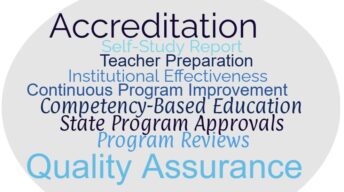Introduction
Accreditation in higher education is like the North Star guiding the way for colleges and universities. It ensures institutions maintain the highest standards of educational quality. Yet, for higher education professionals responsible for completing this work, the journey is not without its challenges. One of the most critical challenges they face is ensuring the data consistency, or reliability, of key assessments. This is why inter-rater reliability, internal consistency, and consensus building serve as some of the bedrocks of data-informed decision making. As the gatekeepers of quality assurance, higher education professionals should possess a working knowledge of these concepts. Below, I explain some basic concepts of inter-rater reliability, internal consistency, and consensus building:
Inter-Rater Reliability
What it is: Inter-rater reliability assesses the degree of agreement or consistency between different people (raters, observers, assessors) when they are independently evaluating or scoring the same data or assessments.
Example: Imagine you have a group of teachers who are grading student essays. Inter-rater reliability measures how consistently these teachers assign grades. If two different teachers grade the same essay and their scores are very close, it indicates high inter-rater reliability. A similar example would be in an art competition, where multiple judges independently evaluate artworks based on criteria like composition, technique, and creativity. Inter-rater reliability is vital to ensure that artworks are judged consistently. If two judges consistently award high scores to the same painting, it demonstrates reliable evaluation in the competition.
Importance in Accreditation: In an educational context, it’s crucial to ensure that assessments are scored consistently, especially when accreditation bodies are evaluating the quality of education. This ensures fairness and objectivity in the assessment process.
Internal Consistency
What it is: Internal consistency assesses the reliability of a measurement tool or assessment by examining how well the different items or questions within that tool are related to each other.
Example: Think about a survey that asks multiple questions about the same topic. Internal consistency measures whether these questions consistently capture the same concept. For example, let’s say a teacher education program uses an employer satisfaction survey with multiple questions to evaluate various aspects of its program. Internal consistency ensures that questions related to a specific aspect (e.g., classroom management) yield consistent responses. If employers consistently rate the program quality highly across several related questions, it reflects high internal consistency in the survey.
Importance in Accreditation: When colleges and universities use assessment tools, they need to ensure that the questions within these tools are reliable. High internal consistency indicates that the questions are measuring the same construct consistently, which is important for accurate data in accreditation.
Consensus Building
What it is: Consensus building refers to the process of reaching agreement or alignment among different stakeholders or experts on a particular issue, decision, or evaluation.
Example: In an academic context, when faculty members and administrators come together to determine the learning outcomes for a program, they engage in consensus building. This involves discussions, feedback, and negotiation to establish common goals and expectations. Another example might be within the context of institutional accreditation, where an institution’s leadership, faculty, and stakeholders engage in consensus building when establishing long-term strategic goals and priorities. This process involves extensive dialogue and agreement on the institution’s mission, vision, and the strategies needed to achieve them.
Importance in Accreditation: Accreditation often involves multiple parties, such as faculty, administrators, and external accreditors. Consensus building is crucial to ensure that everyone involved agrees on the criteria, standards, and assessment methods. It fosters transparency and a shared understanding of what needs to be achieved.
Conclusion
In summary, inter-rater reliability focuses on the agreement between different evaluators, internal consistency assesses the reliability of assessment questions or items, and consensus building is about reaching agreement among stakeholders. All three are essential in ensuring that data used in the accreditation process is trustworthy, fair, and reflects the true quality of the institution’s educational programs.
###
About the Author: A former public school teacher and college administrator, Dr. Roberta Ross-Fisher provides consultative support to colleges and universities in quality assurance, accreditation, educator preparation and competency-based education. Specialty: Council for the Accreditation of Educator Preparation (CAEP). She can be reached at: Roberta@globaleducationalconsulting.com
Top Photo Credit: Markus Spiske on Unsplash

